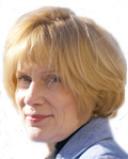Teamwork
Makeovers for Murder Houses
Effective teamwork contributes to a unique reality show.
Posted May 14, 2020

TV shows about home makeovers have been popular for years. Viewers enjoy watching how spaces are transformed, whether a derelict rescue or a luxury enhancement. The field is crowded, and competition for viewers has become intense.
With the recent launch of a short-form streaming service, Quibi, one more design show has attracted attention: Murder House Flip. It’s unique, edgy, and—believe it or not—even heartwarming.
I’m one of the executive producers. I’m also a professor of forensic psychology and a frequent media consultant on true crime. For me, the journey toward series production has been fascinating, mostly for how ideas evolve as more people get involved. It’s a study in social psychology, especially the dynamics of teams. I’m not in the Hollywood mainstream, but I shared in the meetings, pitches, and decisions. I was amazed to watch how it all came together.
The concept for Murder House Flip first sparked in 2017 in my class on extreme offenders, Dangerous Minds. I was discussing a triple homicide from 1995 that occurred not far from my campus in Pennsylvania. Two teenage brothers had murdered their parents and younger brother with the help of their cousin. They ran but were quickly apprehended and sent to prison.
One of my students mentioned that the house where this happened was for sale. I knew about stigmatized properties. Some homes that are impacted by traumatic events like murder or suicide acquire an “emotional defect” that earns them a negative reputation. I discovered that this particular “murder house” had been on the market for months and the price had fallen substantially. Even two decades after the crime, it still had a disturbing aura.
I’m a fan myself of HGTV home makeover shows, so I imagined a mash-up of CSI meets Flip or Flop. It would feature renovations of murder houses to restore their value. At the time, true crime was getting popular and fans were intrigued by macabre locations. I thought the blend of crime and makeover might appeal to a certain type of audience.
Around this time, a friend and co-writer, Josh Berman, who’d been an executive producer of CSI, asked me to send him ideas. He was working with the reality programming executives at Sony Pictures Television (SPT) to develop new shows. Tongue-in-cheek, I offered Murder House Makeover.
To my surprise, he loved it. He and his partner at Osprey Productions, Chris King, wanted a treatment. They added their own suggestions. The concept was this: We’d redesign and renovate houses where a murder had occurred to remove the “bad vibes” and restore market value. We developed a tagline: Sage, Stage, and Sell. Suspense would hang on whether the expense justified the effort.
It was easy to generate a list of properties for our pitch to SPT, but we quickly realized we couldn’t buy them all—or even one of them—so we revised the concept. We’d perform a makeover of the murder area in a house that gave homeowners the creeps. The house would be healed for them, not for sale. The measure of success would be their response. But we retained the title that Josh and Chris preferred: Murder House Flip.
From a list of 20 or so properties, we identified those where such makeovers could be achieved. For one property, it was a yard where a female serial killer buried bodies; for another, the bathroom where a man dismembered his wife. Then we contacted the homeowners and developed detailed pitch sheets.
We planned to include a psychic or spiritual healer. There’s a dimension to these properties that suggests they’re haunted, whether by a spirit or just a psychological “vibe” that reminds people of the incident. It turns out that there’s a whole business in "saging" homes for concerned owners. We also sought a forensic professional for commentary.
Our team at STP added researchers and created a package to pitch. We discussed the tone, the look, and feel of the series, as well as logistics on how to pull this off.
More people were included to address these questions. Then Sony set up pitches. That part was fun, but it came with emotional highs and lows that tested us. From feedback, we refined the concept. We cut things; we added things.
One network that dangled a deal asked that we change the concept. Here’s where I saw the importance of our vision and collaboration. We’d readily revise for a practical purpose, but there’d be no compromise on the concept. Respect for and by everyone on the team kept the project intact. Whether or where it would land, we didn’t know. Two years went by, but we kept going.
That turned out to be a good decision.
Jeffrey Katzenberg and Meg Whitman had just developed Quibi, a unique short-form streaming app for mobile devices. They loved Murder House Flip and thought it would work in this format. Each of the homes they selected would get three five-minute episodes (“quibis”), featuring the crime, the redesign, and the reveal. We added an innovative show-runner, a team of designers (no more psychic for saging), and a construction crew. Production began, and just over three years after I first told Josh the idea, Quibi aired the show. It’s been a success.
There’s more to the story, but the team cohesion stands out to me. Psychological research on the conditions of effective “team cognition” confirms our approach. A good team requires trust, affirmation, and respect, with shared decision-making and supportive, far-sighted leadership. Members intuitively understand what other members will think and do, especially in highly fluid circumstances. Even during low points when we thought we’d hit a wall, we remained unified. From “sage-and-stage” to “redesign and reveal,” respect and commitment paved the path.
References
Weir, K. (2018). What makes teams work? Monitor on Psychology, 49(8). https://www.apa.org/monitor/2018/09/cover-teams




